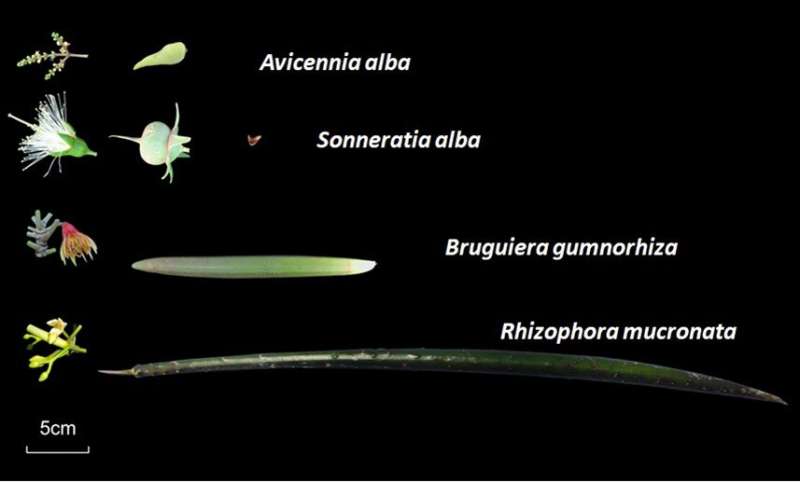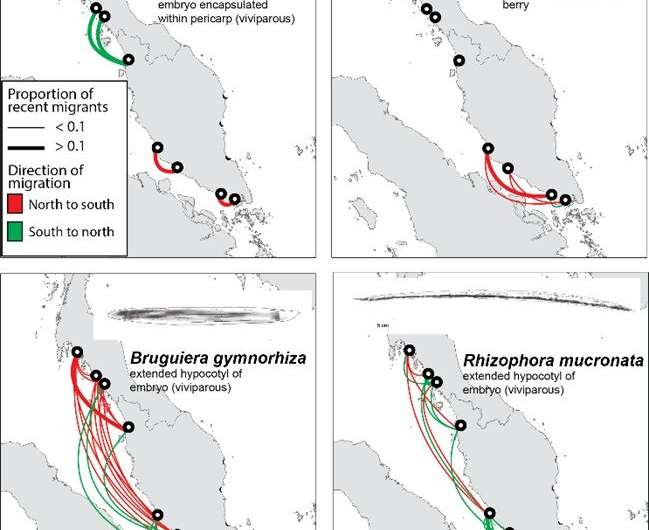The Malay Peninsula is a dispersal barrier to certain mangrove species

NUS ecologists showed that mangrove tree species with seeds/seedlings that float and survive shorter periods at sea have limited ability to disperse across the Malay Peninsula.
Southeast Asia, with its thousands of islands and complex geological history, is one of the most interesting regions in the world to test ideas about dispersal by sea. The distribution and genetic patterns of coastal organisms that we see today contain signatures of their past dispersal activities and allow us to examine how genes moved across this complex landscape impact dispersal activities at present.
A research team led by Prof Edward WEBB and comprising his then Ph.D. student, Dr Alison WEE from the Department of Biological Sciences, NUS used molecular tools to examine the genetic relationship among populations of four commonly occurring mangrove species in Southeast Asia. They showed that the Malay Peninsula functions as a filter to genetic exchanges between the South China Sea and the Malacca Strait. Mangrove species with seeds/seedlings that float and survive longer were able to disperse between coasts while those with lower dispersal potential were largely limited to one side of the peninsula. A closer look at mangrove populations along the Malacca Strait revealed that species with limited dispersal ability had a genetic structure that contains signatures of their historical colonisation route dating back 10,000 years ago. In contrast, species with higher dispersal potential showed that a greater proportion of the genetic structure is associated with recent migration.

These results highlight the distinct lineage history of mangrove populations in this region and the effects of dispersal barriers, such as the Malay Peninsula, on genetic exchange. In particular, the findings underscore the importance of long distance dispersal in maintaining populations with naturally fragmented distribution, like mangroves.

Dr Alison WEE said, "When I first looked at the results I was surprised at how similar the patterns of genetic exchange in mangroves are to marine animals. We always see them as trees, but since their seeds/seedlings are dispersed by the sea route, their genetic patterns more resemble that of coastal animals with passively dispersed larvae."
"With increased research on the global genetic connectivity of mangroves, it is important to expand this study to include more mangrove species and across various physical barriers to construct an integrative biogeography of coastal plants," added Prof Webb.
More information: Alison K. S. Wee et al. Genetic structures across a biogeographical barrier reflect dispersal potential of four Southeast Asian mangrove plant species, Journal of Biogeography (2020). DOI: 10.1111/jbi.13813
Journal information: Journal of Biogeography
Provided by National University of Singapore




















